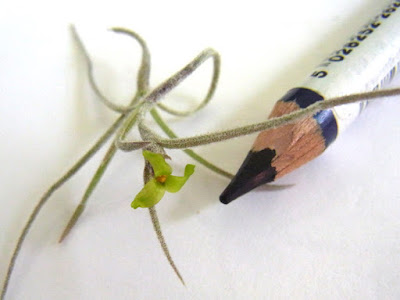As far as years go, I'd be the first to admit that 2015 has not been a "biggie" in the scheme of things. We didn't set any growth records, we didn't redesign the garden, storms didn't destroy it, bumper crops were not harvested ... in fact it proved to be a perfectly normal year all round. Phew!
Yes, there were successes and failures, lots of fun with plants and plenty of fascination with nature, plus a little sadness, and so there remains but one more thing to do before we pop the champagne and declare "Happy New Year" to friends and neighbours: and that's to hand out some awards to the deserving. Now, if Pammy could hand me the envelopes, let's begin the 2015 Garden Amateur Awards!
Plant of the Year/Blog of the Year
And the winner is a happily resettled refugee! Pam's former potted office plant, this delightfully spotty Begonia maculata, was forced to move from its original home simply because it had outgrown the space. It has now settled in superbly into its new outdoor home under the murraya bush (still within view of Pam's office), where it shares the moist shade with other former residents of Pammy's verdant office, some maidenhair ferns. The big suspense surrounded the begonia's chances of surviving its first winter outdoors ... and it not only romped it in — it kept on growing.
Now, this begonia is a bit like those Hollywood blockbusters that take out all the prizes on Oscars night, because as well as winning POTY (Plant of the Year) it also took out the prestigious BOTY (Blog of the Year) award for the most-read blog posting here at Garden Amateur. It seems lots of people wanted to know about what does well in a shady spot.
Wildlife of the Year
The winner of WOTY (Wildlife of the Year) is Mr and Mrs Native Paper Wasp, pictured here building their new creche just outside our kitchen window. Much maligned by the ill-informed anti-insect crowd (the Taliban of nature lovers), paper wasps are beneficial insects which are nowhere near as cranky as the Taliban says they are.
Idea of the Year
Turning little punnets of supermarket sprouts into crops has proved to be a runaway success, and deserving winner of the IOTY (Idea of the Year) award. Pictured here is the chervil sprouts loving life as thriving crops, and elsewhere in the garden the same idea has produced great crops of both flat-leaf parsley and coriander.
Crop of the Year
Though they are small in size, the little Lebanese zucchini takes out the 2015 Crop of the Year (COTY) award through its production of healthy flavour in good, steady numbers. These tasty little fruits just keep on coming, despite the fact that their foliage growing overhead looks like a hospital ward of powdery mildew disasters. Doesn't bother the little workers down at ground level, they just keep on producing.
Surprise of the Year
After more than 20 years of being quietly green and very fragrantly leafy, our false cardamom plant decided it was time to be flowery, which makes it the standout choice for SOTY (Surprise of the Year). However, big questions remain to be answered in 2016 (which might put it in line for Suspense of the Year): Will it flower just once every 20 years? Will it flower every year from now on? What in the hell prompted it to start flowering? Does it know something about climate change that we don't know? Stay tuned...
Fish of the Year
And so that's it for our 2015 Awards Show here at Garden Amateur. Pammy and I and all the regulars here at the Garden Amateur blog would like to say a big "thanks" to everyone who has visited our blog, left a comment or just accidentally found us while looking for something else. We'll be back in 2016 but in the meantime, have a happy and safe New Year and we look forward to continuing to share our love of gardening, nature and anything else that we fancy all through the coming year.






















































